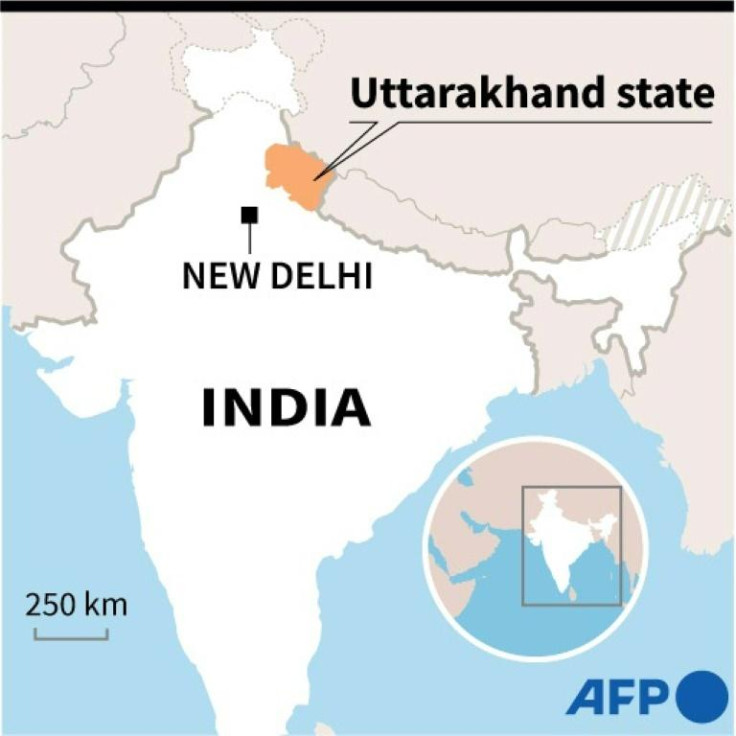200 missing in India after burst glacier causes flash flooding
The increased pace of development in the poor Himalayan regions has also heightened fears about fallout from deforestation and other environmental troubles.
At least 200 people are missing in northern India after a piece of Himalayan glacier fell into a river, causing a torrent that tore through two power plants and swept away roads and bridges, police said on Sunday.
Three bodies have been found and a desperate operation has been launched to rescue about 20 people trapped in a tunnel, the Uttarakhand state police chief said.
The massive surge of water swept through the Dhauliganga river valley, destroying everything in its path, videos taken by terrified residents showed.
"There was a cloud of dust as the water went by. The ground shook like an earthquake," local inhabitant Om Agarwal told Indian TV.
Most of the missing were workers at two power plants that were battered by the deluge, caused by a huge chunk of glacier that slipped off a mountainside further upstream, said the police chief Ashok Kumar.
"There were 50 workers at Rishi Ganga plant and we have no information about them. Some 150 workers were at Tapovan," he added.

"About 20 are trapped inside a tunnel. We are trying to reach the trapped workers."
With the main road washed away, the tunnel was filled with mud and rocks, and paramilitary rescuers had to climb down a hillside on ropes to reach the entrance.
Hundreds of troops and paramilitaries along with military helicopters and other aircraft have been sent to the region.
Authorities emptied two dams to stop the flood waters reaching the Ganges at the towns of Rishikesh and Haridwar, where authorities barred people from going near the banks of the sacred river, officials said.

Villages on hillsides overlooking the river were evacuated, but as night fell authorities said the main flood danger had passed.
Scores of social media users captured the disaster, with footage showing water tearing through a narrow valley below the power plant, leaving roads and bridges destroyed in its wake.
Prime Minister Narendra Modi said he was monitoring the relief operation.
"India stands with Uttarakhand and the nation prays for everyone's safety there," he said on Twitter.
About 14 glaciers overlook the river in Nanda Devi national park -- the topic of scientific studies because of growing fears over climate change and deforestation.
"Avalanches are common phenomena in the catchment area," M.P.S. Bisht, director of the Uttarakhand Space Application Centre, told AFP. "Huge landslides also frequently occur."
He said the glacier could have blocked the river, causing the buildup that had devastating force when it broke through.
The increased pace of development in the poor Himalayan regions has also heightened fears about fallout from deforestation and other environmental troubles.
Monsoon floods in Uttarakhand in 2013 killed 6,000 people and led to calls for a review of development projects in the state, particularly in isolated areas like those around the Rishi Ganga dam.
Uma Bharti, a former water resources minister, said that she had called for a freeze on hydroelectric projects in "sensitive" Himalayan areas including the Ganges and its tributaries when in government.
Vimlendhu Jha, founder of Swechha, an environmental NGO, said the disaster was a "grim reminder" of the effects of climate change and the "haphazard development of roads, railways and power plants in ecologically sensitive areas."
"Activists and locals have constantly opposed the massive river valley projects," he added.
Copyright AFP. All rights reserved.
This article is copyrighted by International Business Times, the business news leader




















